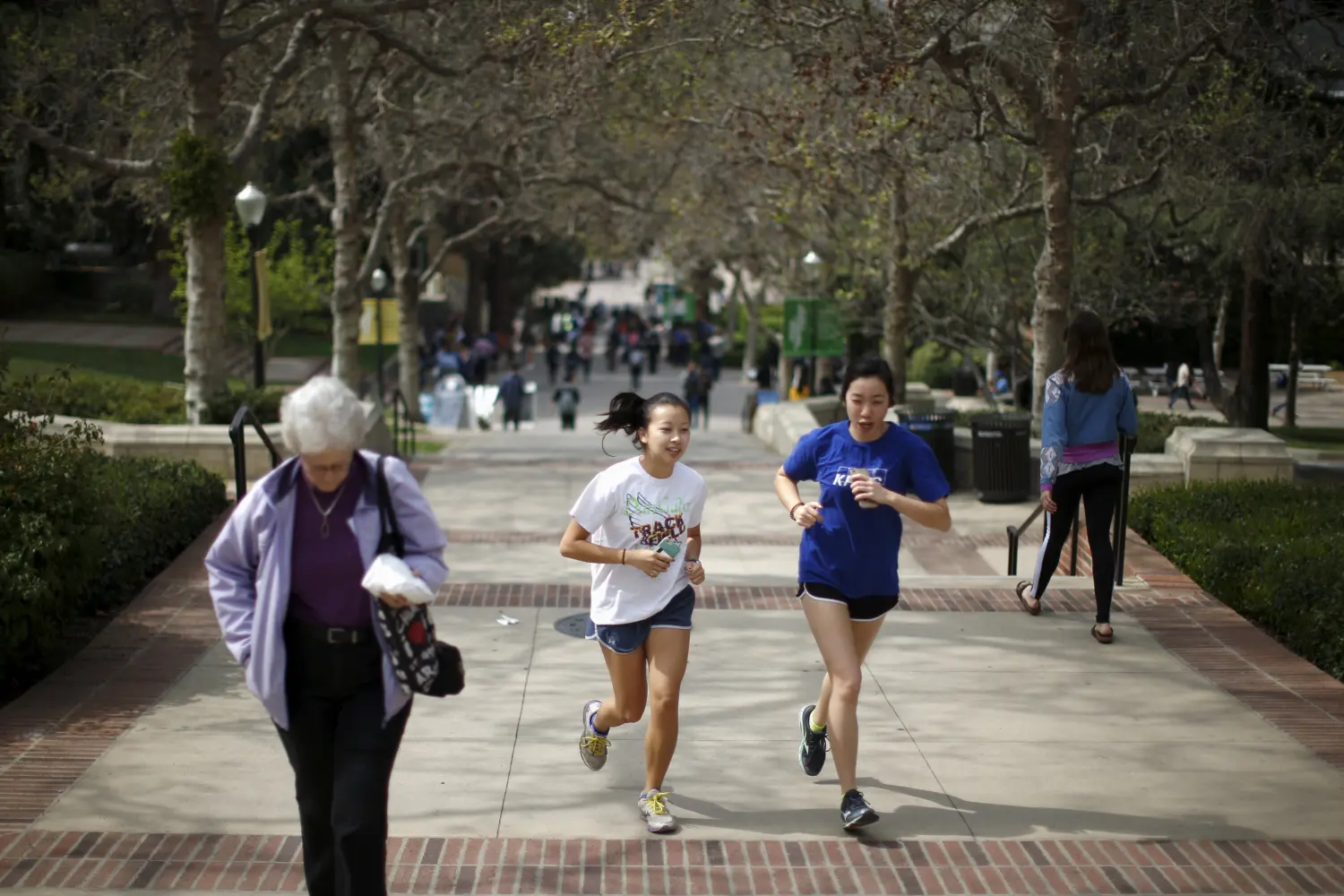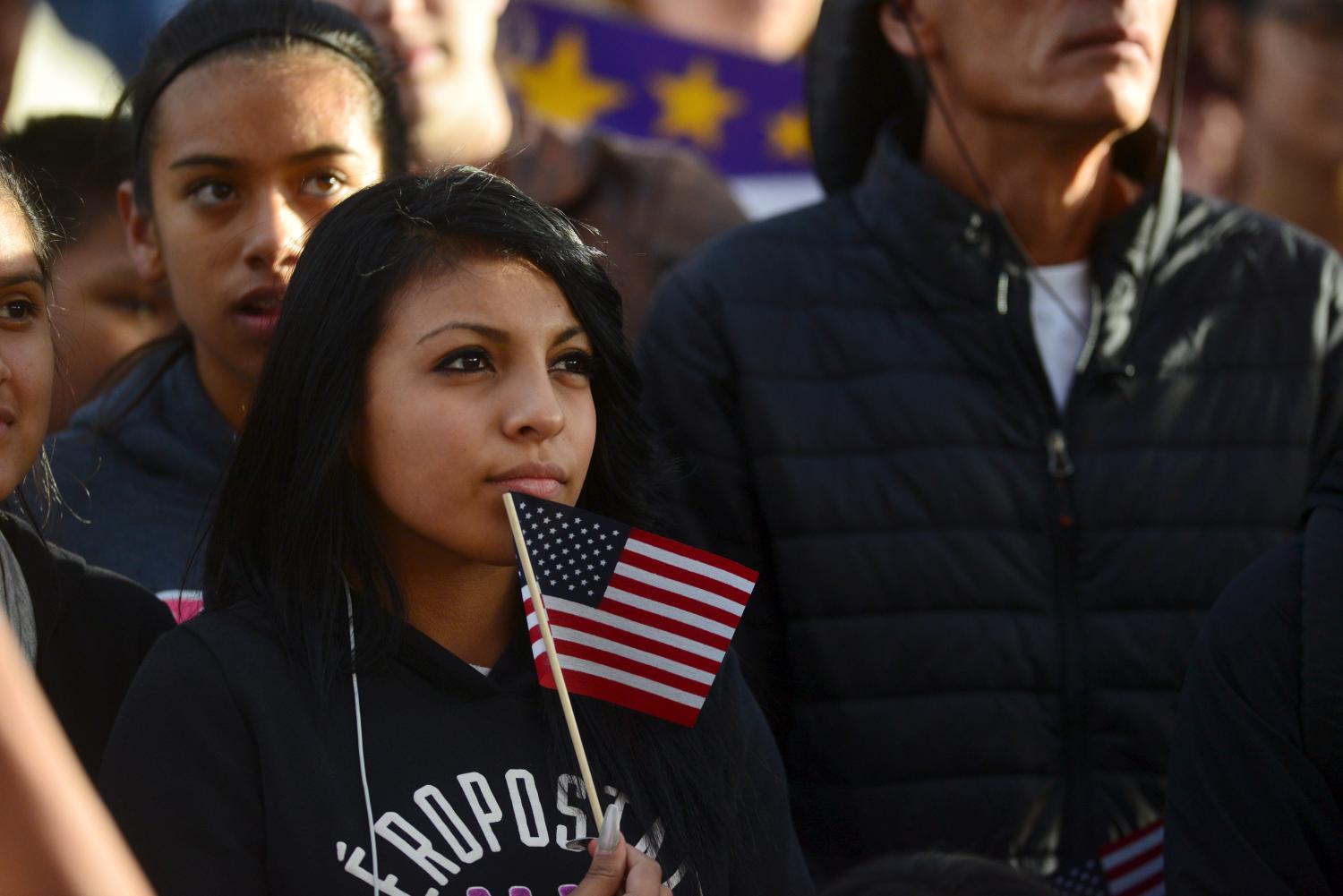“There is but one race—humanity.” So says Millicent, paramour of the Irish protagonist in George Moore’s 1900 play, “The Bending of the Bough.
But Millicent does not run the U.S. Census Bureau. Data on a myriad of economic and social factors can be analyzed by self-defined racial or ethnic category. The huge inequalities between people in different racial categories are one of the most pressing challenges for public policy in the 21st century.
Simple racial categories bring both benefits and risks
The distinctions drawn by statistical categories inevitably simplify a complex kaleidoscope of history, culture, and lived experience. For one thing, there is a growing mixed-race population, as our colleague Bill Frey shows in his book, Diversity Explosion. In 2010, for example, 15 percent of black children under five were actually defined as both black and white. Analysts can also be insensitive to the great diversity that exists within a particular racial category, as well as between them.
Simplistic racial categories can also provide fuel for racial stereotypes. One of the strongest is the idealization of Asian-Americans as a “model minority”—hard working, studious, committed to family, and so on. There are a number of problems with this characterization. First, it misses the huge heterogeneity between different Asian-American groups. People of Bangladeshi and Korean origin, for instance, cannot be easily lumped together. Second, even the “positive stereotype” applied to Asians can carry a cost for young people by artificially inflating expectations or narrowing life choices, as Jennifer Lee and Min Zhou show in their excellent book, The Asian American Paradox.
Third, holding up one racial or ethnic minority as a “model” can too easily become an implicit criticism of other minorities. “If Asians can do it, why can’t you?” is the thought process lying not far below the surface of some commentaries on race and racism in the U.S. This is perhaps the most dangerous byproduct of the model minority stereotype, and a form of racism in and of itself.
Asian-American successes in perspective
It is certainly true that treated as a whole group, Asian-Americans appear to be doing well. Relative to other racial and ethnic minorities, they live in wealthier neighborhoods, have high marriage rates, high levels of educational achievement, and are successful in the labor market.
The most striking success of Asian-Americans, and the one most commonly highlighted in the media, is in educational attainment. While 36 percent of whites, 23 percent of blacks, and 16 percent of Hispanics have a bachelor’s degree or more, 54 percent of Asians do. Furthermore, while 14 percent of whites have advanced degrees, 21 percent of Asian-Americans do.
Why? For many, the answer is simple: culture. The New York Times columnist David Brooks points to a “Chinese attitude toward education”that aims to “perfect the learning virtues in order to become, ultimately, a sage, which is equally a moral and intellectual state. These virtues include: sincerity (an authentic commitment to the task) as well as diligence, perseverance, concentration and respect for teachers.” Kay Hymowitz points to “a cultural trait that has become a cliché in the model-minority discussion: a zealous focus on education. For Chinese immigrants, education for the next generation is close to a religion.” Amy Chua, of “Tiger Mom” fame, suggests that “strikingly successful groups…share three traits that, together, propel success. The first is a superiority complex—a deep-seated belief in their exceptionality. The second appears to be the opposite—insecurity, a feeling that you or what you’ve done is not good enough. The third is impulse control.” Psychologists have tested Chua’s “triple package” empirically, however, and found little support for her thesis.
In these discussions, there is a danger that scholars and commentators miss the diversity that exists within the Asian-American population, and over-emphasize the importance of a quasi-mystical “Asian-American cultural attitude,” as opposed to more prosaic explanations for success—like school quality.
Belief in hard work, rather than just in education
A common refrain is that Asian-Americans value education more, on average, than other groups. But the evidence for this is not wholly convincing. In a College Board/National Journal survey of 1,272 adults ages 18 and older, the majority of members of all ethnic and racial minorities agreed with the statement, “young people today need a four-year college degree in order to be successful.” (It was white students that were more skeptical.) However, Asian-Americans are more likely to believe that academic achievement results from greater effort, rather than greater skill. This belief can in fact explain a large part of the superior academic outcomes for Asian-Americans, according to some studies. Believing that hard work pays off, Asian-American students work harder—and, for them, it pays off.
Why do young Asian-Americans have a stronger belief in the connection between effort and education? One obvious point—though often overlooked—is that Asian-Americans are largely first- or second-generation immigrants, and immigrants are by definition a self-selected group. They are the ones who have been willing and able—or whose parents have been willing and able—to take the often risky journey to start a new life in a foreign land. Immigrants are often well-educated. Asian-Americans have in fact been a uniquely hyper-selective migrant group. The share of well-educated Asian immigrants is in fact higher than the American population average. This alone is likely to influence outcomes, since there is a clear connection between parental education and the education achievement of their children.
Asian-Americans attend better schools
There may be an even more straightforward explanation for why Asians do better in terms of education: they are more likely to go to better schools.
Drawing on microdata from the 2014 American Community Survey, we calculate school-level math proficiency rates to probe this question. First, we take school averages for pass-rates on state-administered math tests from 3rd through 6th grade (weighting by grade size). To avoid any endogeneity problem, the possibility that the passing rates of Asian students themselves might push the schools’ numbers upward, we strip out Asian-American test-takers from our tabulation of school-level passing rates. Next we calculate the average passing rate for all the schools within each Public-Use Microdata Area (PUMA)—geographical areas containing roughly 100,000 people each—weighting our data by school size. PUMAs are rough proxies for public school attendance zones. Last, we rank all the PUMAs within each state, according to their average math passing rate. (So a PUMA between the 80th and 100th percentile contains schools with an average math-passing rate in the top fifth for that state.)
These rankings can be used to estimate whether Asian-Americans enjoy differential rates of access to good schools.
Note that here we are measuring the quality of schools to which different racial groups have likely access to, rather than those which they actuallyattend, which allows us to dig deeper into differences by racial category. But our results for Asian-Americans are broadly consistent with a recent paperby Jonathan Rothwell that did track attendance.[1]
We find that Asian-Americans do in fact live in areas with state-level school performance rates far more similar to whites than Hispanics or blacks:

Of course Asians and whites have higher average household incomes than blacks and Hispanics, which, other things equal, would suggest that they will be able to afford to live in areas with better schools. Work by Douglas S. Massey and Jonathan Tannen shows that Asians tend to live in neighborhoods that have higher median property values (a factor that strongly influences school funding levels through local property taxes) than their black or Hispanic counterparts.
But in fact the gap in access to good schools is almost as pronounced for those living in low-income households (i.e. those below 150 percent of the Federal Poverty Line) as for the general population:

It is also possible that there are some peer effects at work here. Maybe those Asian-American kids are boosting their classmates’ performance. But it seems highly unlikely that any such effect would be substantial, or sufficient to explain the gaps above. Asian-Americans make up roughly 5 percent of public school enrollment nationally. In our sample, Asian-American 5thgraders make up less than 10 percent of their grade populations in 95 percent of the schools, and less than 55 percent of the students in 99 percent of schools.
So, the conclusion seems clear: Asian-Americans live near better schools. This explanation for higher achievement is of course a rather boring one, compared to appeals to culture. But it suggests that policymakers would do better to promote higher-performing schools than worry too much about promoting “Asian values.”
Asian-Americans are far from the same
So far we have followed research convention in treating Asian-Americans as a single group. But there are wide differences between different Asian-American groups. Many are struggling economically; the “Asian” advantages popularized in the media are far from universal.
Many groups from East Asia and India are doing very well economically. But Cambodians and Hmong are on the lowest rungs of the economic ladder, with very high poverty rates, of 38 percent and 29 percent respectively. Why is this? And is there an explanation of why some Asian groups do so well, while others struggle? According to the “model minority” theory of the case, economic hardship ought not to matter so much. Culture and values are supposed to overwhelm economic conditions.
In our data, we find some suggestive evidence to the contrary. The Asian groups faring poorly are those living in areas with poorer quality schools—similar, in fact, to those in which African Americans live. At the other end of the scale, the Asian groups doing well look to have access to higher performing schools. This finding seems to hold even when we take Asian scores out of our rankings, and for those below the 150 percent of the poverty level:

But, do schools really impact achievement?
On the face of it, asking whether school quality influences student outcomes is naïve. There is a vast evidence base suggesting that it does. But given the strength of the “model minority” thesis, it is worth looking to see if the educational attainment of different Asian-American groups lines up with our assessment of their access to good schools.
Here we have to turn to state-level data. California is home to just over 30 percent of the national Asian population (according to the 2010 Census). In terms of access to good schools among different Asian ethnic groups, the state is broadly similar to the national picture. Many East Asian groups and Indian Americans have above-par access, while those from Southeast Asia tend to have below-par access (defining “par” as the white rate):

The academic performance of children from these different groups on the California Standards Tests (CST) suggests that inequalities in educational access among Asian-Americans tend to be mirrored in educational achievement. The data from the CST End of Course Algebra 1 exam taken by eighth graders in the state shows a striking picture:

Groups like Cambodians and Laotians are faring much worse than their Korean, Chinese, Japanese, and Indian counterparts in the state—in line with their access to better schools. (Note that the Chinese population here includes Taiwanese, who enjoy noticeably above-par access to good schools in the state of California.) These academic performance gaps within the Asian-American population are in fact just as wide as the gaps between white and black Americans.
To be clear: we do observe a broad shift upward in academic performance for Asian-Americans as compared to their initial rates of access to good schools. There may be a host of further reasons for this relatively uniform shift upward. Asian-Americans tend to have higher rates of family stability, for instance, which is likely to help their children do better at school. There is also some variation within the broader picture: note for instance the strong outcomes for Vietnamese Americans, even though their access to good schools is less than for whites.
But overall, given the similar—and striking—differences in access to quality schools, and apparent relationship to outcomes, it seems reasonable to conclude that material factors like access to good schools plays a critical role for all Americans, whatever their race.
Unfortunately Texas and New York—with the next largest Asian populations—do not release proficiency rates for Asians. (Shocking, really, but that’s for another day.) However, some additional data from Minnesota seems to further reinforce a similar pattern of broad heterogeneity in Asian subgroup exam scores, largely mirroring our pattern in national access to good schools by ethnicity.
Time to ditch the “model minority” mindset
We have presented evidence that access to good schools may explain some of the good educational outcomes for Asian-Americans, and for different groups within the Asian-American population. There are exceptions, however. Those of Vietnamese origin do well; better than might be expected given their material circumstances and parental educational backgrounds. As highlighted in The Asian American Paradox, these exceptions may stem from access to shared resources and institutional structures built by other Asian minority groups. As relatively recent immigrants, or children of immigrants, Asian-Americans are also a self-selected group, hard to compare to people in other racial categories.
Having well-educated parents and a belief in hard work and will serve any child well, regardless of their race or ethnicity. To the extent that some Asian-Americans benefit disproportionately from both, they are likely to do better than others. But the danger is that too much emphasis is placed on these factors, rather than on more straightforward ones more amenable to public policy intervention, like access to good schools. As our former colleague Jonathan Rothwell and others have shown, black children in particular are likely to attend worse K-12 schools.
We have also shown that there are minorities within the Asian minority, and stark differences between them. This should act to further caution us against the adoption of “model minority” simplicities, and in particular, using them to implicitly cast blame on other racial or ethnic minorities for their own economic and social disadvantages.
[1] The one exception was that whites are more likely to attend a good school even in a PUMA with weaker schools. This may be a result of segregation within PUMAs, or a greater likelihood of attending a school outside the PUMA.
The Brookings Institution is committed to quality, independence, and impact.
We are supported by a diverse array of funders. In line with our values and policies, each Brookings publication represents the sole views of its author(s).






